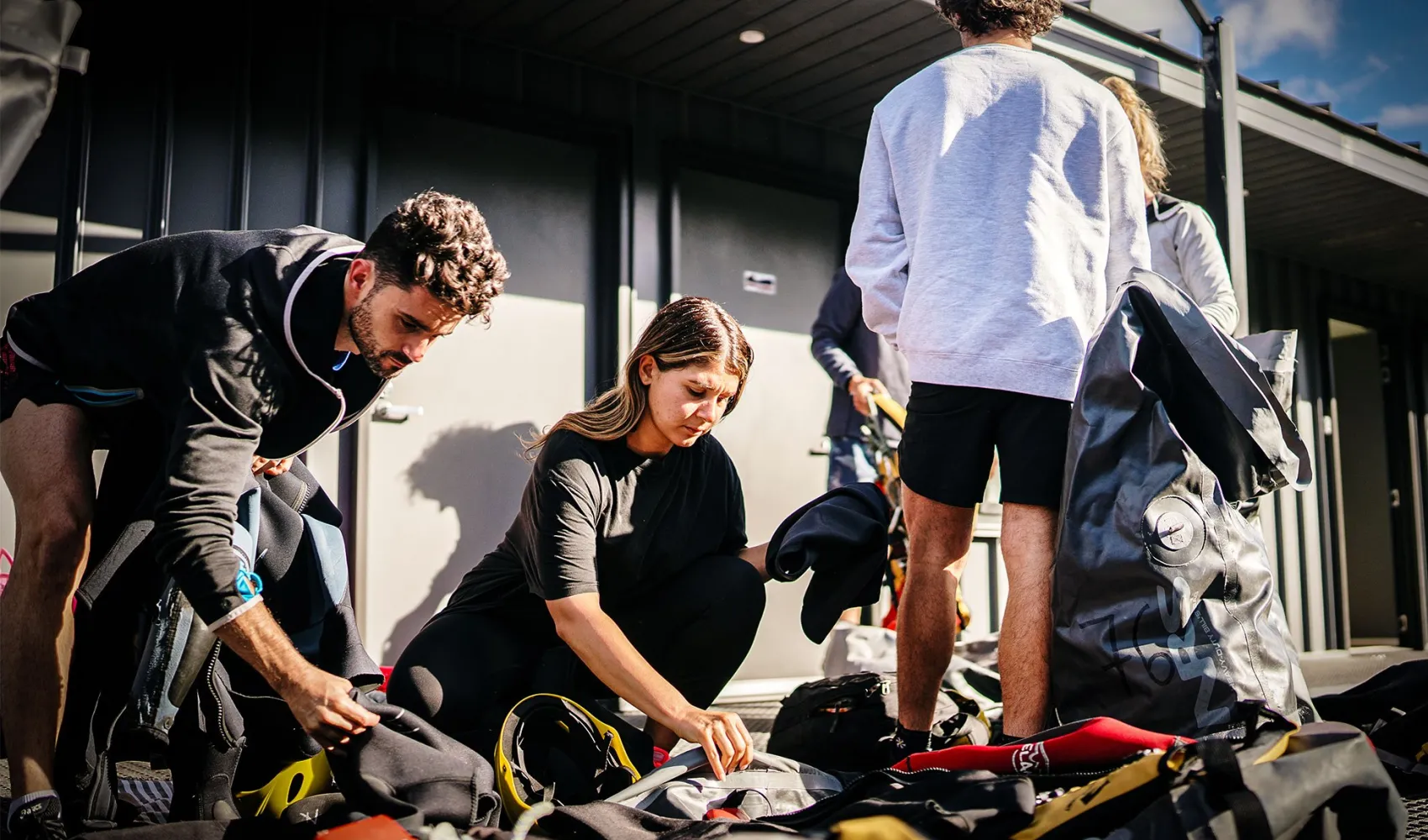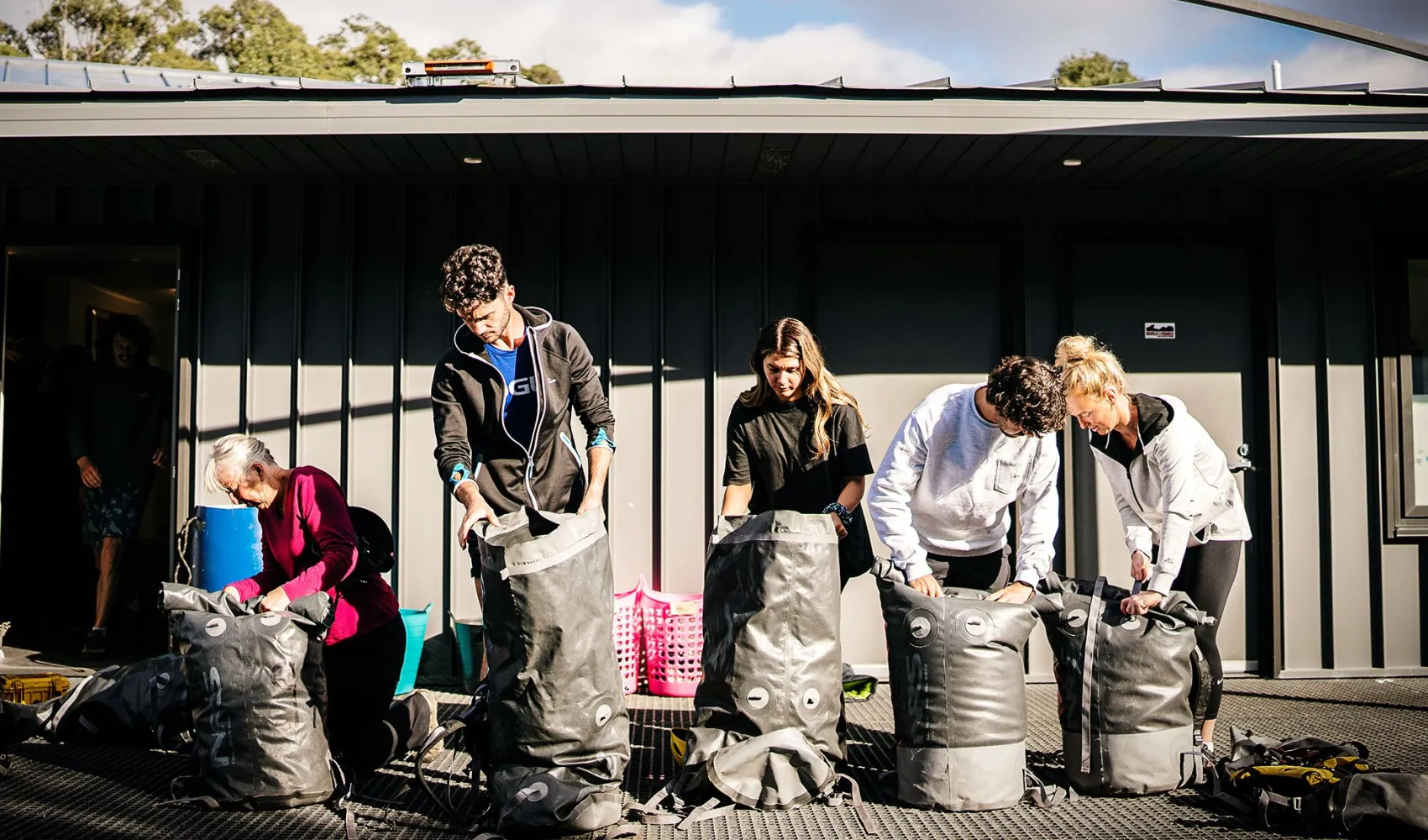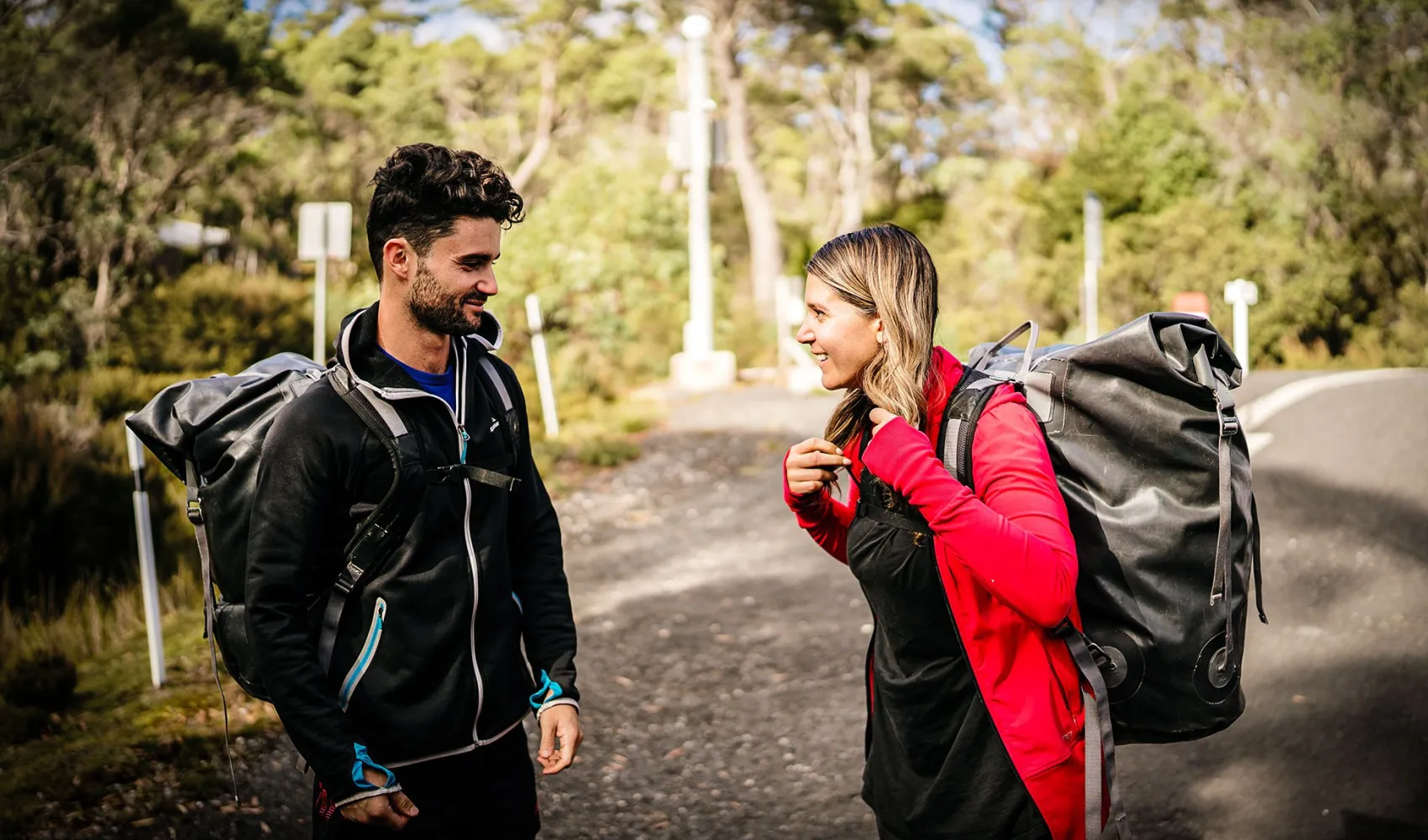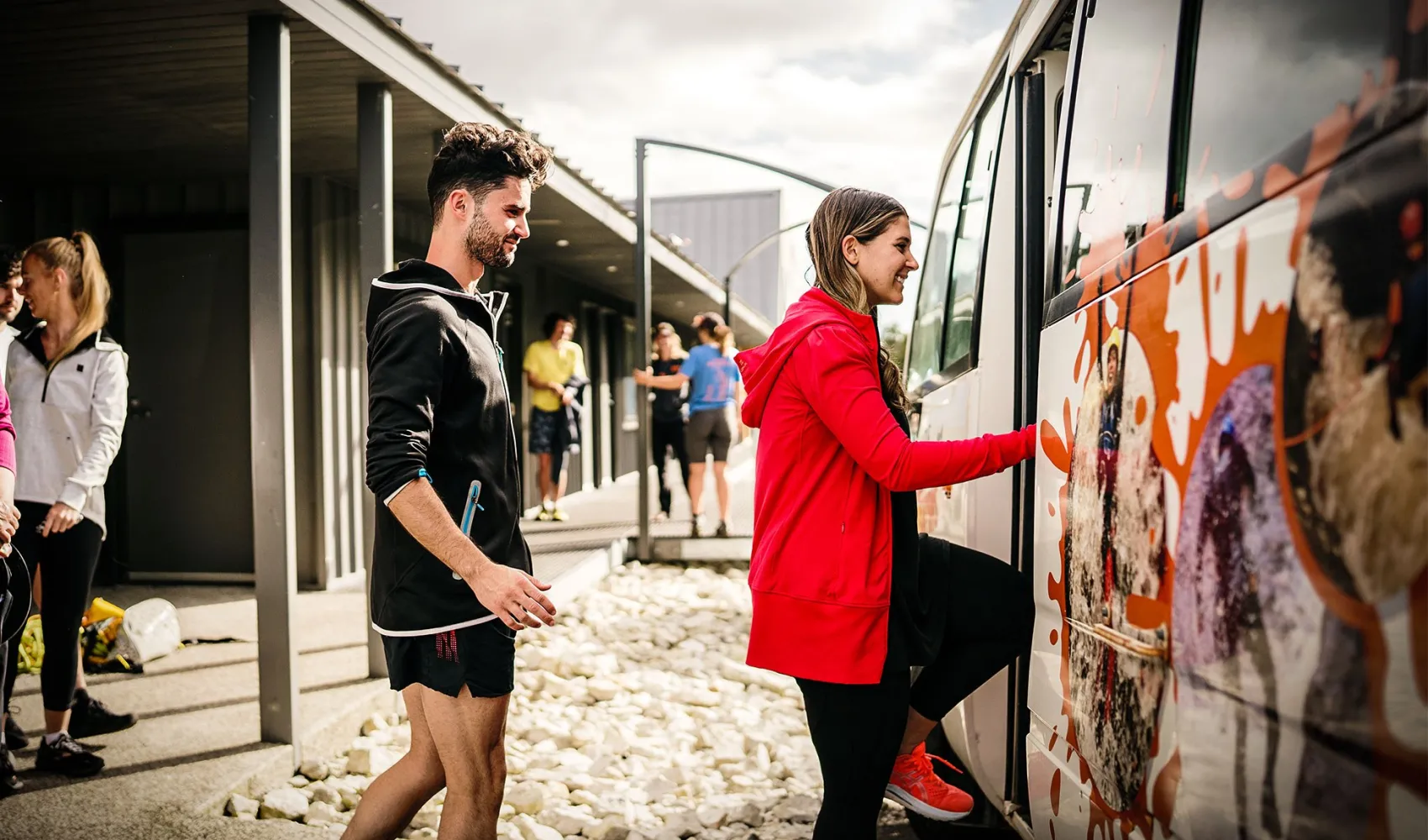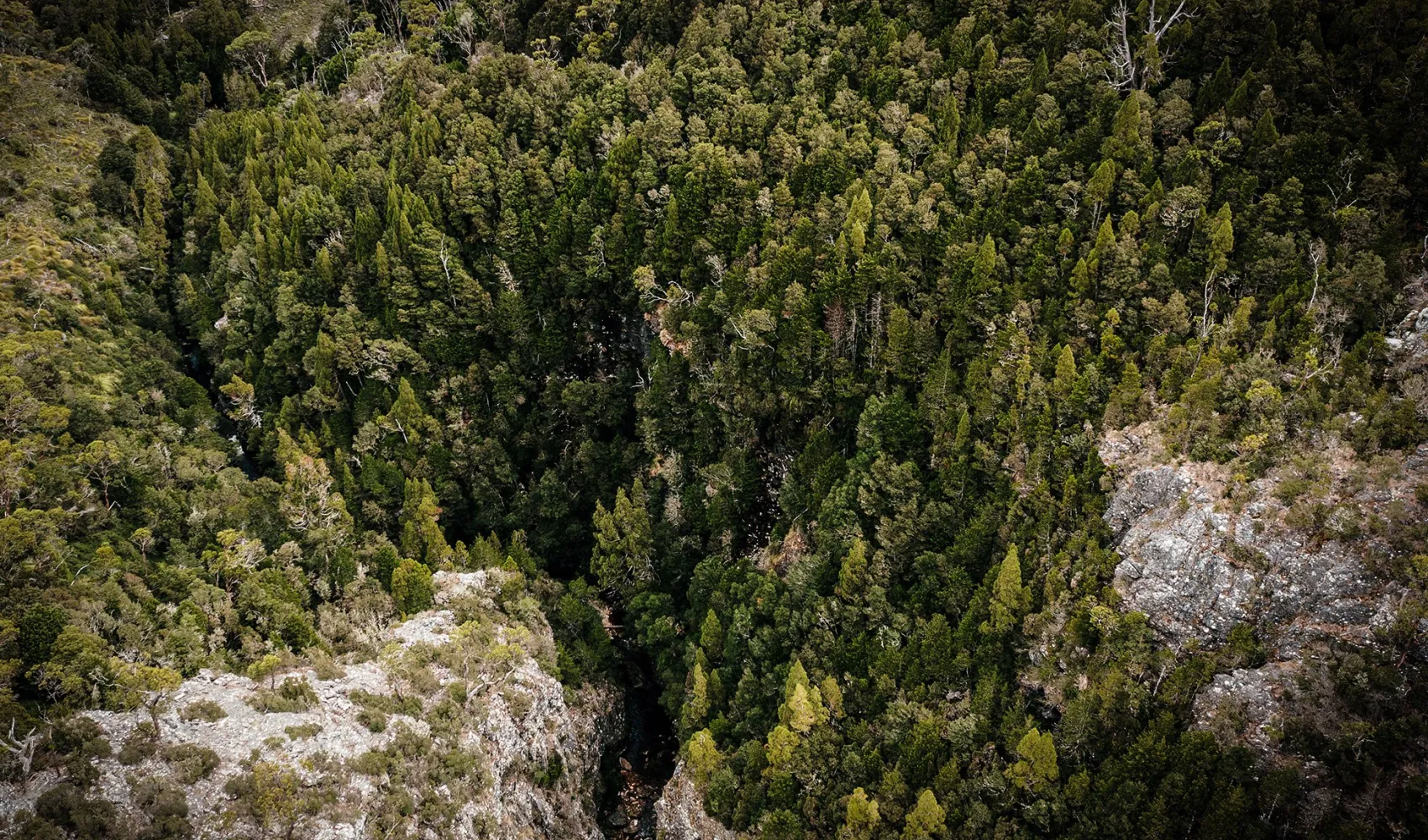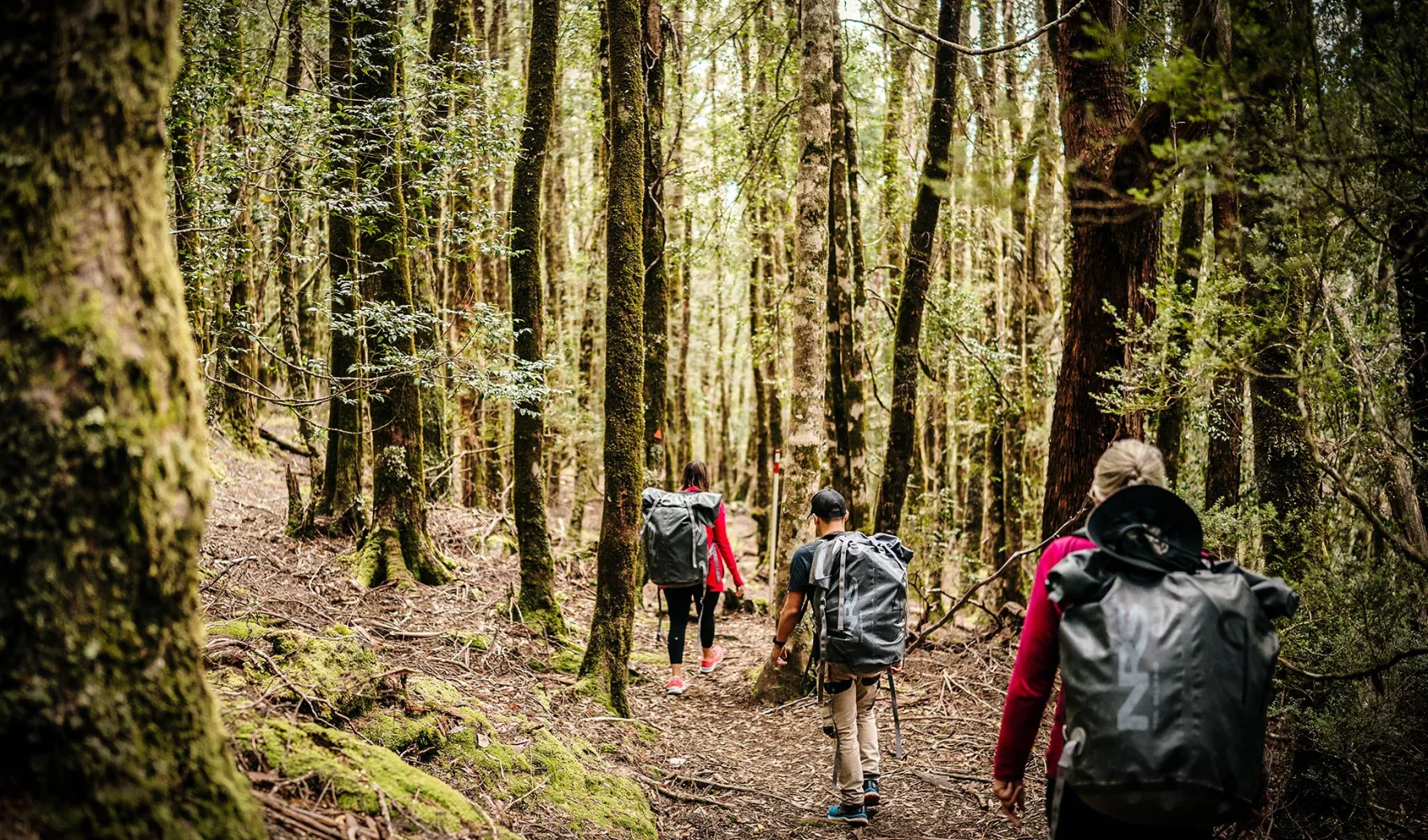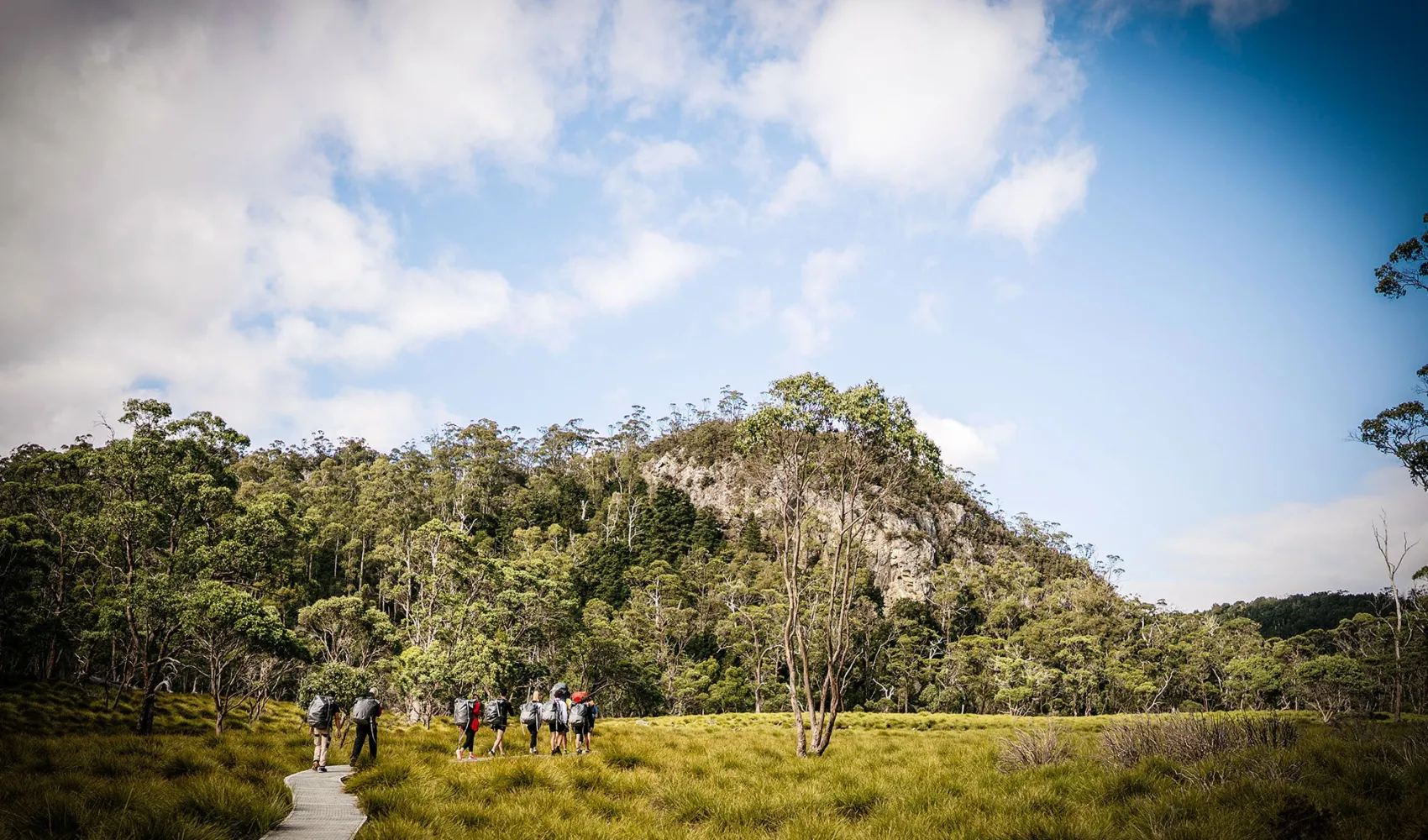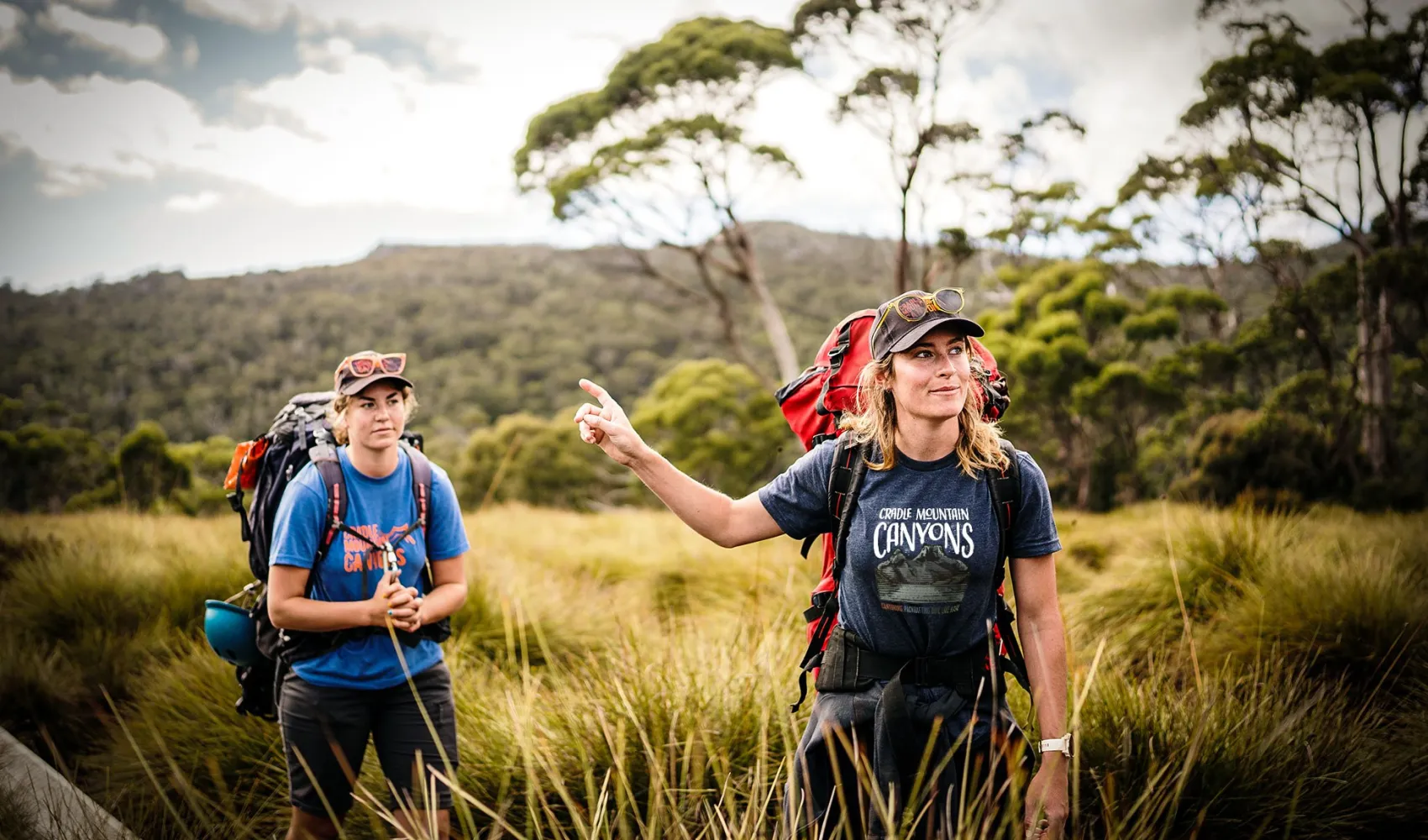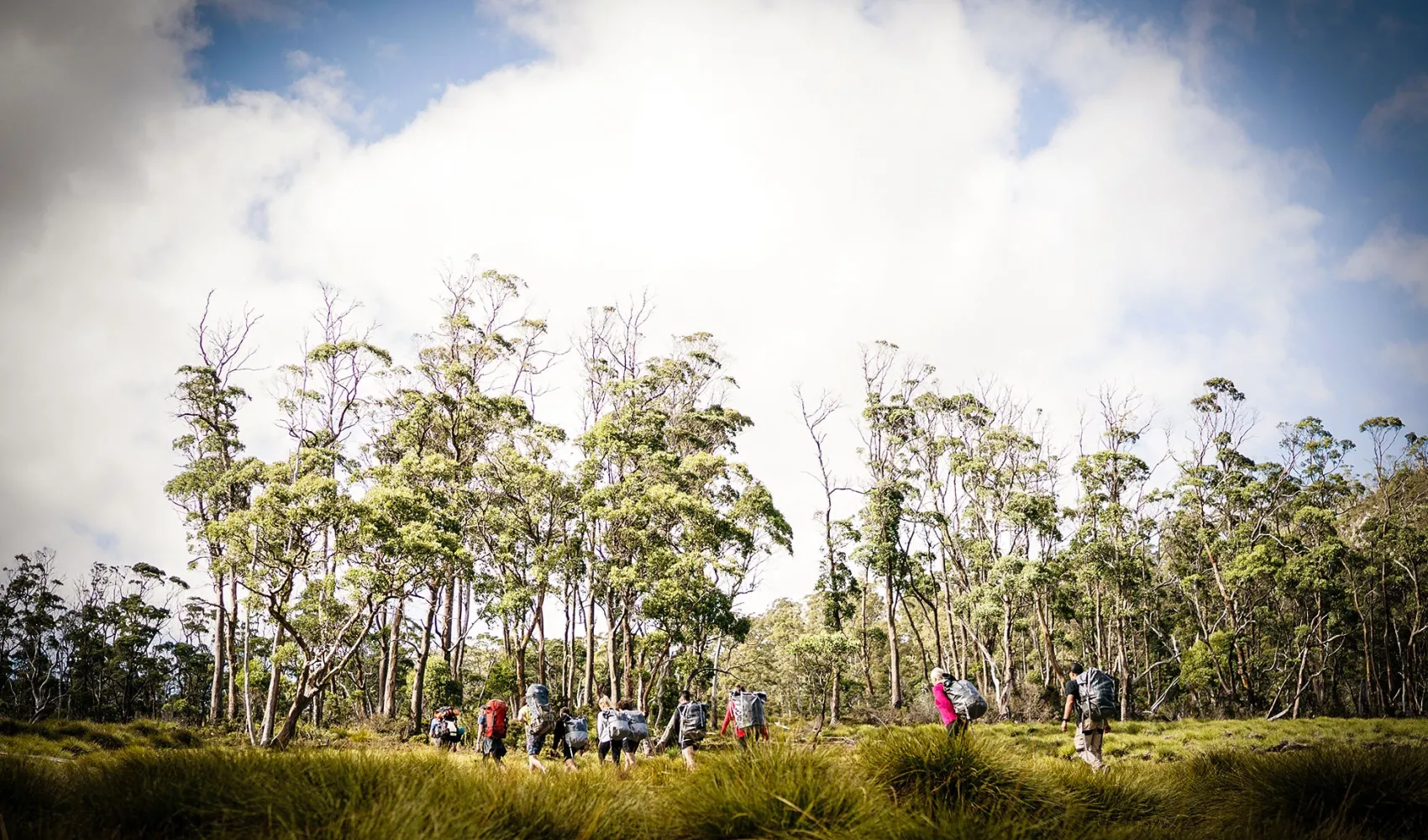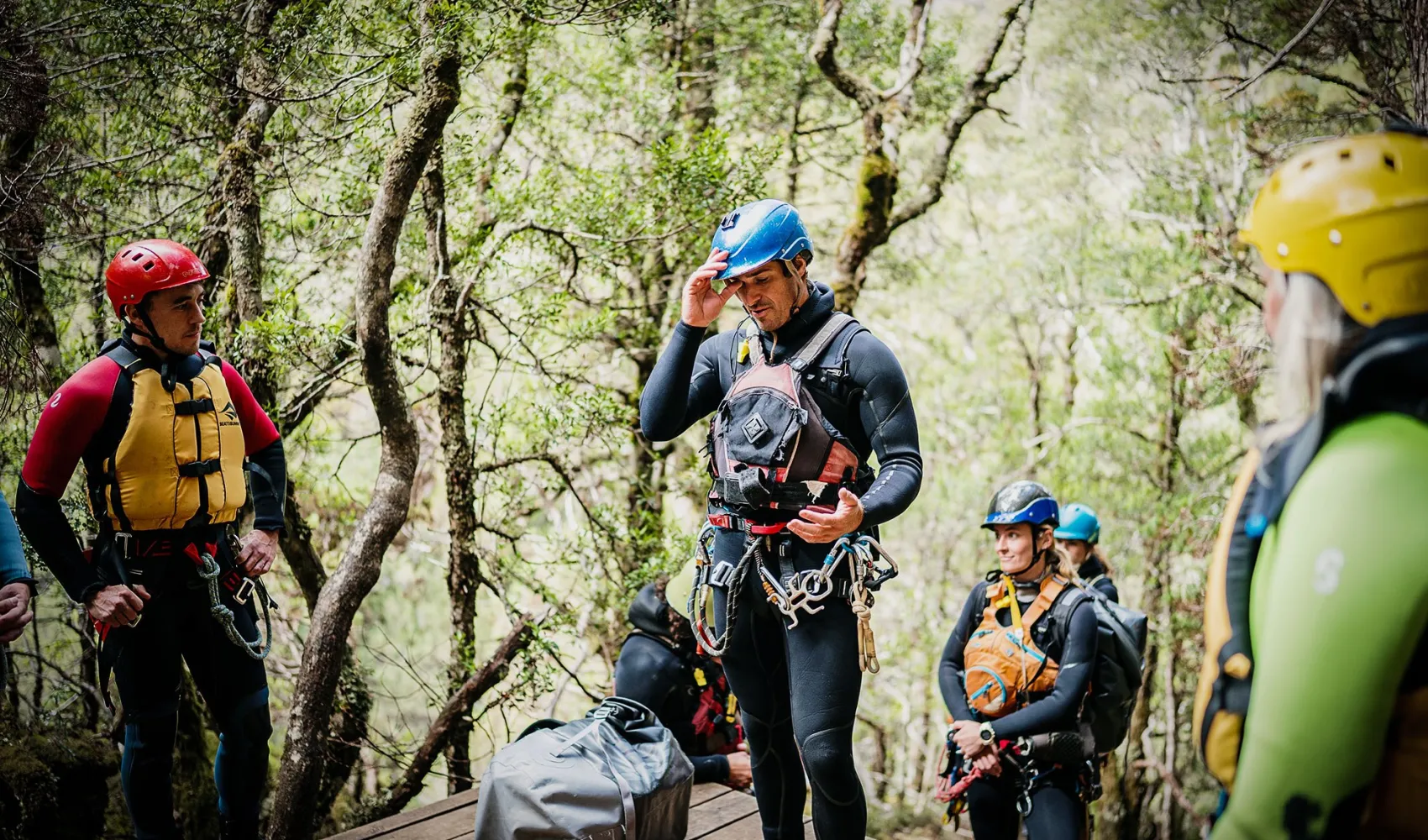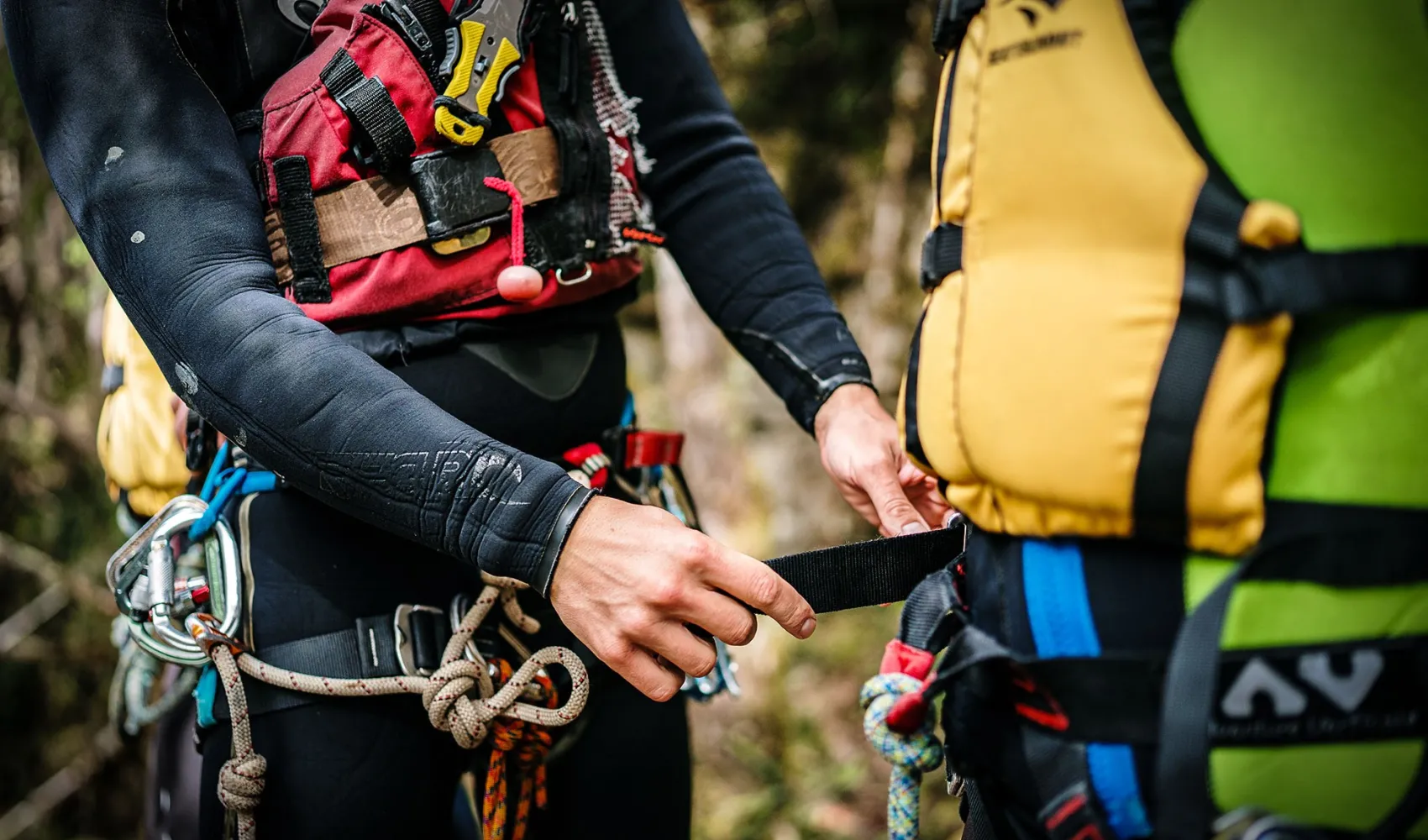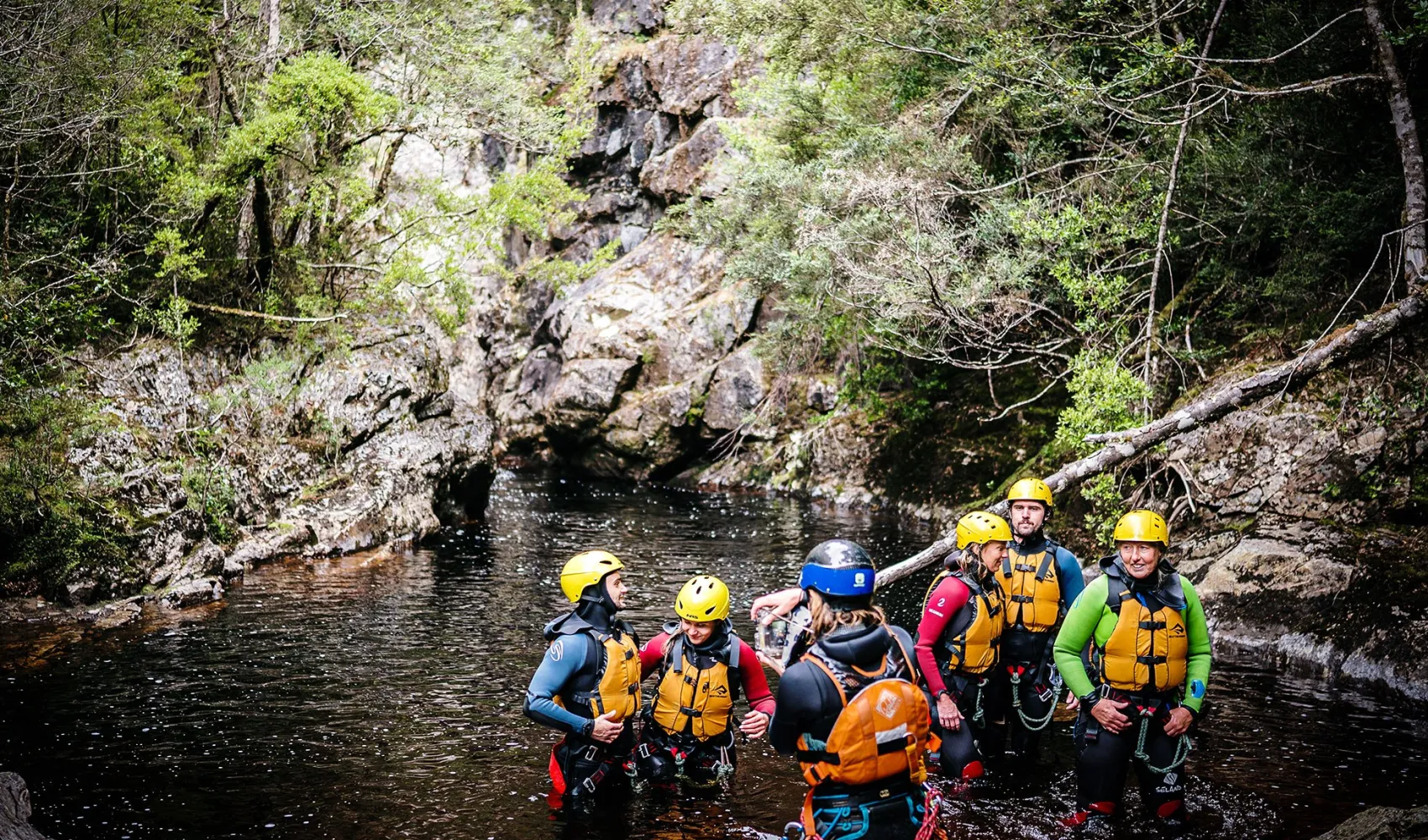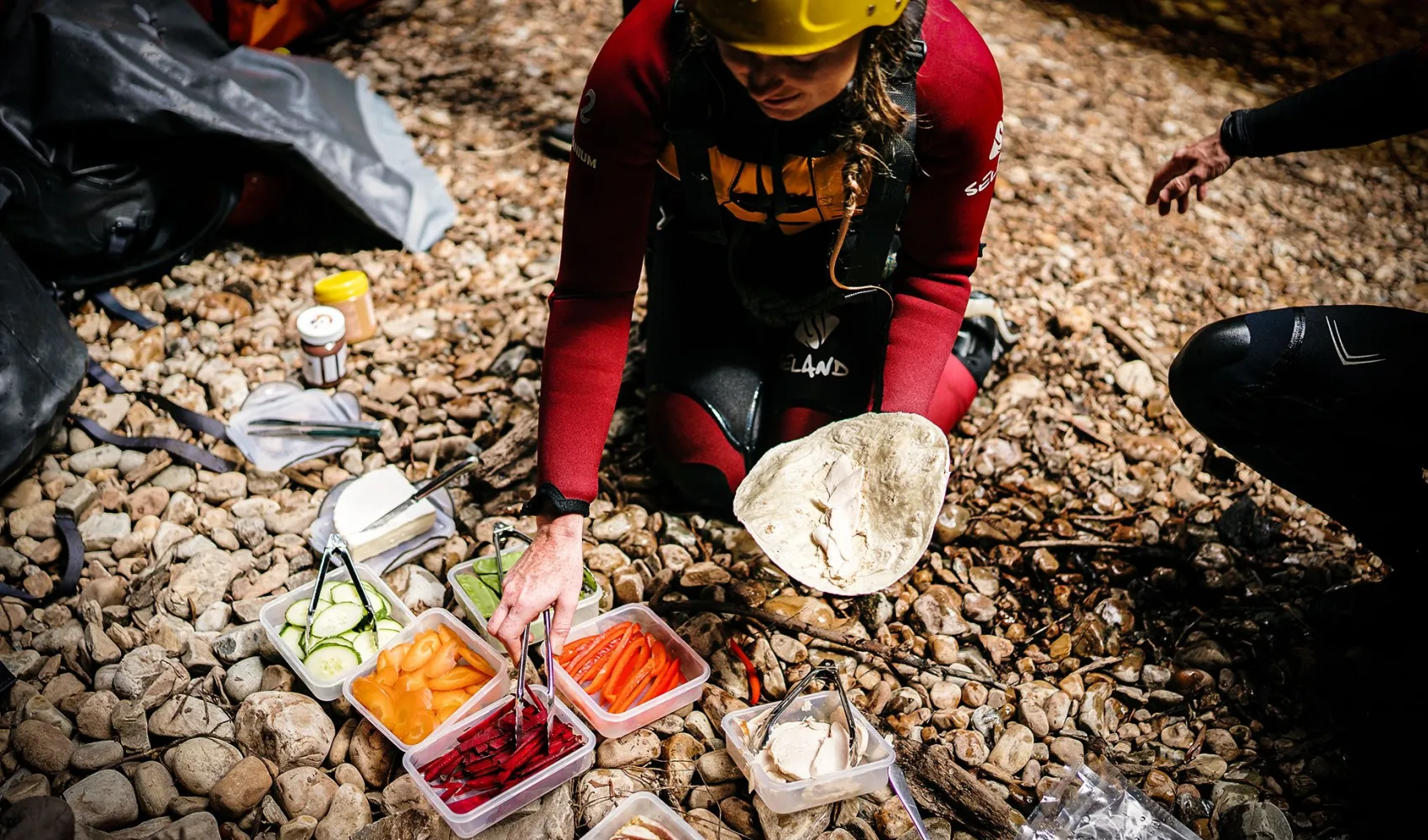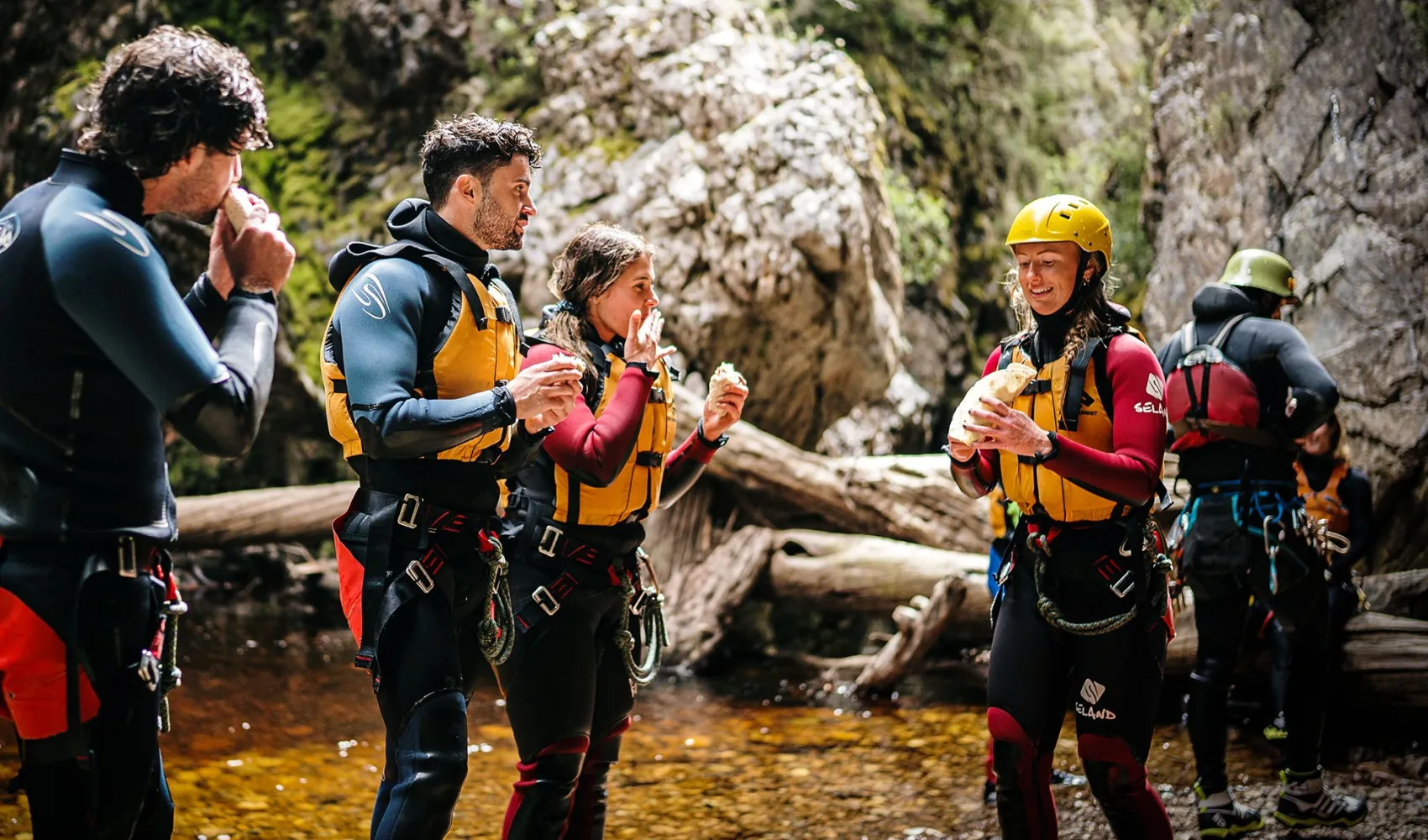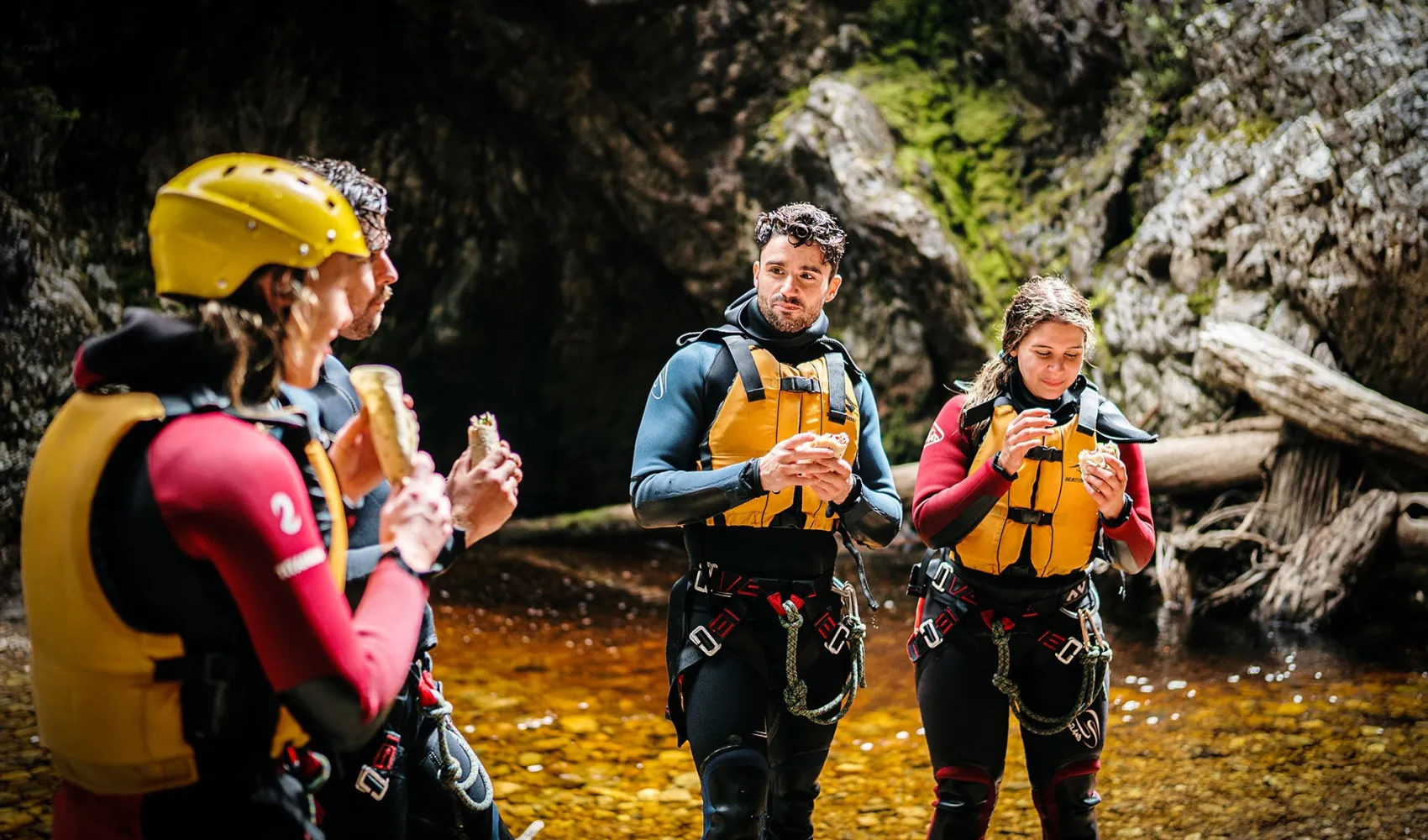
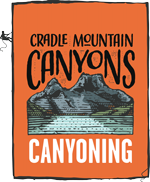
What is canyoning?
Canyoning involves putting on a wetsuit and a helmet and traversing a section of river, using whatever techniques necessary to overcome the obstacles found along the way. Techniques used include walking, climbing, jumping off waterfalls, abseiling and swimming. Our Lost World Canyon does not require customers to climb or abseil, however there are optional jump rocks for those who want to spice things up. We use all of the above techniques to negotiate the Dove Canyon.
Is canyoning danergous?
Canyoning can be dangerous for those without guidance, knowledge or experience of the area, or the right equipment. Cradle Mountain Canyons’ guides possess great skill, knowledge of the area and experience canyon guiding. They are all trained and qualified in First Aid, Swift-Water Rescue and Abseiling. Our equipment is second to none and has been tried and tested for its suitability to the area we operate in. Additionally our operations are subject to regular independent audits.
Do I need to be able to swim?
Being able to swim on the Lost World Canyon is desirable, but not required. Customers MUST be able to swim for the Dove Canyon. We say 25m without a stop as a rough guide for swimming ability required for Dove Canyon.
Do I need a National Parks Pass
Yes, for the Dove Canyon and Lost World Canyon Tours. Park fees are not included in the tour price as a lot of people have them already. We recommend arriving early and purchasing passes from the Visitor Information Centre prior to the trip departure. You do not need a Parks Pass for the Machinery Canyon Tour.
How big are the groups?
Max is 12, average is 8 or 9. We can accomodate bigger groups though - please call 1300 032 384 if you would like to discuss a group booking.
What should I bring?
We provide all the specialised gear you need to wear throughout the trip – life jacket, helmet, wetsuit, shoes, gloves and harness. You should bring with you:
- Something to go under your wetsuit (bathers or undies will suffice. A rash-vest or thermal top if you have them are good.) Whatever you wear under your wetsuit will get wet, so dry undies and socks are good to have to get changed into.
- Clothes and shoes in which to walk into the canyon. It can be cold at Cradle Mt any time of the year, so it's always worth having a rain coat and warm clothes.
- A hat, drink bottle and sun-cream. You will not need these while canyoning, but they are good to have for the walk into and out of the canyon.
- A towel (there are no change-rooms in the wilderness - so a towel it is).
- If you require the aid of glasses, you will need to bring a strap to secure them.
- Any medications you require. Please notify your guide prior to the tour of any medical/physical conditions you feel we need to know about. If you need to bring medication, we can carry it in our waterproof first aid kit.
- Do not bring anything valuable with you. The river gods have a taste for jewellery and Swiss watches.
Wher do we meet for the tour?
Our office is located next to the Cradle Mountain Visitor Centre. All canyoning tours depart from our office. Parking is available free of charge. Please aim to arrive 15 min prior to the tour time.
I have a medical condition. Does that stop me from participating?
We reserve the right to refuse to take a client on a tour if we feel they are not physically capable of completing the tour. However, we do not ask clients to complete a medical form prior to the tour. We think that if you are well informed about what is involved in the trip, you are generally a better judge of whether you will be able to handle it than we are. Just tell us if there is anything about your physical or medical condition that you think we need to know.
We require a doctors certificate for anyone who is pregnant and wanting to come canyoning with us. Please consult with your doctor if you are unsure about your fitness for a canyoning tour. Our tours cater for a wide range of abilities and fitness levels.
Please feel free to call us any time if you have any questions about your ability to participate on a tour.
What happens if the tour is cancelled, or I need to cancel? Are there any fees?
No fee if you can give us at least seven days notice. 100% cancellation fee for less than seven days. For multi-day tours and courses, there is no refund for cancellations made less than 30 days before departure. Cancellations made 30 to 60 days before departure will recieve a 50% refund. 100% refund for cancellations made more than 60 days before departure. We give 100% refunds for COVID related cancellations (e.g. border closures).
Will the tour run if it is raining?
We are getting wet anyway in the canyon, so we don’t feel too fazed by bad weather. However, canyoning can be dangerous if there is a chance of the river flooding. Cradle Mountain Canyons reserves the right to cancel any tours at any time due to unsafe conditions. In this case, customers will be given the choice of an alternate tour or a full refund.
Can I bring a camera?
Sure, but it is at your own risk and it must be waterproof. We take photos of all tours and these are included at no extra cost, so we recommend letting us take care of that, so you can focus on enjoying the canyoning.
Is there phone reception at Cradle Mountain?
Only Telstra mobile phones have good reception at Cradle Mountain. Please notify us of your accommodation provider if you do not have access to a Telstra Mobile, just in case we need to contact you prior to the trips departure.
Where should I stay at Cradle Mountain
There are a bunch of great accommodation options around Cradle Mountain from Camping to luxury hotels. Check out the Discover Tasmania Website

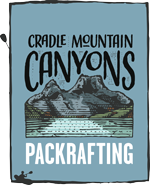
What is Packrafting?
Packrafts are inflatable kayaks. They are called packrafts because they roll up small enough to fit in a pack. Our packrafts also feature an air-tight zip, allowing us to pack all the gear we need in the tubes of the boat, meaning no gear getting in your way on the deck.
On this trip you paddle your own craft. A guide will always be near by, showing you the way, but they can't stear the boat for you.
Packrafts are easier to paddle and more stable than traditional white-water kayaks, and people usually pick it up quickly.
Is packrafting dangerous?
We are heading into an uncontrolled wilderness environment, so there are always some risks. You will have two guides with you though. Both guides will be experienced river guides, trained in Swift Water Rescue and Wilderness First Aid.
You will be equipped with a life jacket, helmet and river shoes that probably have better grip on wet rocks than anything you have worn before.
If you listen to the instructions of your guides, you will stay safe out there.
What are the physical requirements?
This is a physical three days and people are usually worn out by the end!
For maximum enjoyment of this trip you need a good level of fitness. You don't need to be an elite athlete, but if you regularly get out cycling, swimming, hiking, or something of that sort, you will have the sort of fitness that makes this trip more enjoyable.
Some people find sitting in a packraft for five hours pretty hard work, particularly if overweight. As a test, sit on the ground with bent legs straight out in front of you. If holding your body up straight while doing this becomes very uncomfortable or difficult after a short amount of time, you might struggle with being in a packraft for a full day.
You do need to be able to swim 25 metres without a stop for this trip.
Please give us a call on 1300032384 to discuss physical requirements if you have any questions.
What can I do to prepare physically
Anything that improves your general fitness will help.
Core strength is actually the key to effective paddling, more so than strong arms. Anything that improves your core strength will make three days paddling more fun. Do a bit of planking or sit-ups in front of the telly in the lead up to the trip!
Kayaking is the best training of all for this trip. You don't need any experience kayaking before the trip, but if you do have access to a boat to go out for a paddle in (flat water is fine) that will be great training for the trip. Swimming some laps at the pool is great too, if getting out in a kayak isn't an option for you.
What should I bring?
When you sign up, we'll send you a packing list with everything you should bring.
In a nutshell though, you bring sleeping bag and mat, camp clothes, toiletries and head torch. Sleeping bags and mats are available for hire if required.
We provide a tent, all food from lunch on day one to lunch on day three, camp kitchen including cutlery etc and all packrafting gear - packraft, paddle, wetsuit, paddle jacket, river shoes, life jacket, helmet.
Where do we meet for the tour?
We start and finish at Aspire Adventure Equipment in Launceston.
We meet at 830am and are usually back by about 4pm at the end of the trip.
You can park out the front and then follow our bus to the place we leave cars after the briefing - and hop in our bus from there.
I have a medical condition. Does that stop me from participating?
Not at all but we do ask that you are open with us about anything that could become an issue on the trip. As we are not doctors, we may ask for a medical certificate to attest your ability to complete the trip for some conditions.
Is there phone reception?
No! leave your phone at home and enjoy a few days of peace.
What are the camp sites like?
Epic! A highlight of the trip is the amazing campsites. Both are right next to the river, with platypus often seen doing laps a stone's throw from us while we eat dinner (don't throw stones at platypus please).
Night one is at the head of the gorge and night two is right in the guts of the gorge.
There are no facilities at the campsites. Everything we need for the three days we carry in our boats.
We want to have a minimum impact on the environment, and we carry everything out - including toilet waste. Each guest gets a tube for that. It's not as scary as it sounds and the guides will show you how to use it! The 'poo tube' is a wonderful way to minimise your impact on the environment!.
What will the river levels be like?
We have predictable flows due to a dam upstream that releases a consistent amount of water. It is very rare that there is either too much or not enough water.
Flows are generally a bit higher due to inflow from tributaries up to the end of Dec and then from roughly mid-march. Those extra flows do make the rapids a bit more fun. On the other hand, it is warmer in Jan and Feb, which is very nice in the gorge.
What grade are the rapids?
Mostly grade one and two on day one (that basically means easy). There are a couple of rapids on day one that are a bit more challenging, but this day gives you a great opportunity to learn to drive the boats.
When we get into the gorge early on day two, we step up a grade, with a lot of grade three rapids. Grade three is super fun, but manageable for beginners in packrafts.
Day three starts with more gorge paddling with grade three rapids. After we emerge from the gorge, the rapids drop back a grade for another hour or two before we get back to the bus.
There will be one or two short portages on day two (where we carry the boats around a rapid).
What are the cancellation policies?
You can get a full refund up to 60 days before your tour. A fifty percent refund is available up to 30 days ahead of tour date. There is no refund for cancellations less than 30 days from tour date. Full ts and cs can be seen at https://cradlemountaincanyons.com.au/tsandcs

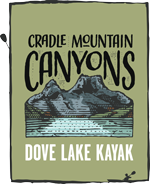
What sort of kayaks do we use?
Our kayaks are double sea kayaks. The design is called a Guillemot Double and is by Nick Shade.
We have built them ourselves out of King Billy pine. This has been very much a passion project, with hundreds of hours going into each boat.
Where do we meet?
You will need to catch the shuttle bus into the park from the Cradle Mountain Visitor Centre (you will need a valid Parks Pass to get on the bus). Aim to be on the bus 30 min before your tour time. Ride the bus all the way to the end of the line at Dove Lake.
Once the new viewing shelter at Dove Lake opens, we will be meeting you at our boat shed. Until that time, our guide will meet you at the fence that is currently blocking entry to the viewing shelter. It is right next to where you hop off the bus.
What do we bring?
Bring something to wear under the cag we give you (a cag is lie a rain coat for kayaking). Ideally this is something not cotton - a rash vesy, thermal, merino or nylon layer.
Also bring shoes or sandals that you don’t mind getting a bit wet.
Definitely bring a hat, sun cream and drink bottle.
Can I bring my phone for photos?
Sure thing. We will give you a pouch to put it in that attaches to your life jacket, so if you drop it it won’t end up 65m down at the bottom of Dove Lake.
How many people in the group?
At this stage, up to six. It will be eight plus a guide, as we finish the rest of the King Billy fleet.
We do have another double available that we can use. So if you have a group of eight wanting to go, give us a call. It just won’t be a lovely King Billy pine kayak just yet.

Book today and let
the adventure begin
TOURS RUN EVERY DAY BETWEEN NOV 1 AND APR 30



